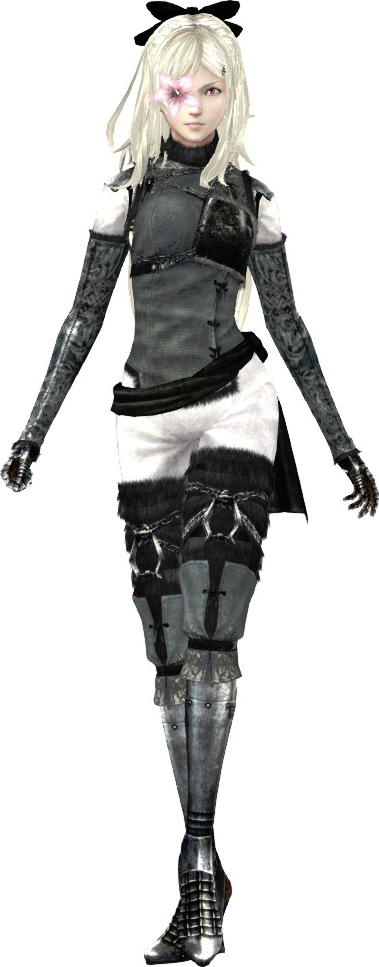
.jpg)
The Int’l Version doesn’t change the language to English, it’s just featuring another singer and the song is made a little more orchestra-pop, especially in the latter half. Other vocals include the theme song “Kuroiuta” (translated “Black Song”) by Eri Aoi, as well as the “International Version” of said song by Emi Evans. It’s muddy, and while I found this at times frustrating, I also found it the exact analog that fits DOD3 with its siblings. It’s certainly not the dulcet experience of DOD2, nor is it the simple structure of DOD1. The intense 3/4 rhythm is back, and the mix of singing and whispering is here as well. For starters, Nobuyoshi Sano returns to create a third incarnation of “Exhaustion,” this time with vocalist Maaya Uchida. Yet, the vocal-heavy influence of NieR also found its way into DOD3. These odd rhythms catch our ears off-guard, and they force us to mentally “catch up” with the rhythm that we expected to be in a common 4/4 time signature.Īnd, while the team chose not to reference the works of Bartok, Mahler, or Wagner as they had in the first game’s soundtrack, they do use orchestral loops and samples to create the cacophony of sounds so famous from DOD1. We’re talking about 5s, 6s, 7s, and various combinations thereof (such as 11 or 13). The composers did just that, and they did it in a way I didn’t know possible!įirst and foremost, there are the irregular time signatures.

It was only reasonable, then, that the soundscape would respect both Drag-on Dragoon and NieR. You see, Drag-on Dragoon 3 serves as a prequel to the original title, and it included story elements that would wind their way into NieR. I challenge anyone to come up with a better example. This soundtrack, though it may not in the end turn out to be my top pick of 2014, deserves its own accolade as being the smartest soundtrack of 2014. Emi Evans also made a return, though only for four songs (as opposed to the dozen or more she’d done for NieR). Team members from Drakengard and NieR returned, as did NieR’s sound team MONACA studios, including the venerable Keiichi Okabe and Keigo Hoashi. That is, until Square Enix announced Drag-on Dragoon 3, which was developed by Access Games.

#Drakengard 3 dlc two get past cannons series
They disbanded, and many of us, once again, considered the series to be dead in the water. The MONACA sound team hit it out of the park, and the extensive vocals from Emi Evans thrust her into the spotlight for VGM fans the world over.ĭespite NieR’s aural successes, the game itself became a cult classic at best, without the sheer sales figures to keep Cavia afloat. It was my favorite soundtrack of 2010, and it was one of Square Enix’s best-selling soundtracks: so much so that they went on to release three separate arranged albums (Nightmare DLC/Arrange, “echo,” and a Piano Collection). 1300 years after that event, we got a taste of something strange and wonderful in “NieR.” Musically, it was a huge step forward. Then, out of nowhere, Cavia announced “NieR.” NieR was a side-game in the Drakengard universe, tangentially connected via the exquisitely absurd “Ending E” from the first game, wherein the fantasy-world hero and his dragon ended up in modern-day Tokyo.
.jpg)
However, it did have a very beautiful continuation of the vocal theme “Exhaustion” (sometimes rendered “Exhausted”) by Nobuyoshi Sano.ĭue to the sequel’s poor sales, many fans and industry experts alike were left to assume that this little series was over. Its music was more palatable than its predecessor some found it underwhelming and less memorable with Yoshiki Aoi at the helm. Arguably the most lackluster title in the series, it served as a direct sequel to the first game’s “canon” path (Ending B), taking the formula from the first game and attempting to refine it and put together a somewhat more linear experience. The second game didn’t seem worthwhile to Square Enix to publish in North America, but Ubisoft brought it in their place. The game’s music was a strange and cacophonous mix of sound, wherein composers Nobuyoshi “Denji” Sano and others sampled famous orchestral works alongside electronic beats and tons of effects. Square Enix acted as publisher as developer Cavia put together the first game, a multi-genre mix of Panzer Dragoon, Dynasty Warriors, and more. The Drag-on Dragoon series (“Drakengard” in North America and Europe) has come along in a most unconventional way.


 0 kommentar(er)
0 kommentar(er)
